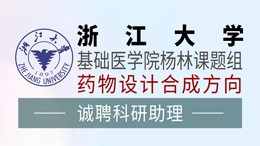当前位置:
X-MOL 学术
›
J. Am. Soc. Nephrol.
›
论文详情
Our official English website, www.x-mol.net, welcomes your
feedback! (Note: you will need to create a separate account there.)
Urinary Cytokeratin 20 as a Biomarker for AKI-CKD Transition among Patients with Acute Decompensated Heart Failure and Acute Kidney Injury
Journal of the American Society of Nephrology ( IF 10.3 ) Pub Date : 2024-10-11 , DOI: 10.1681/asn.0000000518
Han Ouyang 1 , Rui Ma 1 , Xiaobing Yang 1 , Chunbo Chen 2 , Xin Xu 1 , Jianwei Tian 1 , Jun Liu 1 , Yan Zha 3 , Huafeng Liu 4 , Tiecheng Yang 5 , Fan Fan Hou 1
Journal of the American Society of Nephrology ( IF 10.3 ) Pub Date : 2024-10-11 , DOI: 10.1681/asn.0000000518
Han Ouyang 1 , Rui Ma 1 , Xiaobing Yang 1 , Chunbo Chen 2 , Xin Xu 1 , Jianwei Tian 1 , Jun Liu 1 , Yan Zha 3 , Huafeng Liu 4 , Tiecheng Yang 5 , Fan Fan Hou 1
Affiliation
of 90%.Urinary CK20 might be used as a novel tool for early identifying patients at high risk of kidney function loss after AKI. Background Predicting the risk of AKI-CKD transition remains a major challenge in the management of acute decompensated heart failure (ADHF) and AKI. This study investigated the clinical utility of urinary cytokeratin 20 (CK20), a novel biomarker reflecting the severity of histological acute tubular injury, for identifying patients at risk of AKI-to-CKD progression. Methods This prospective cohort study included a test set comprising 279 consecutive hospitalized patients with ADHF and AKI in five centers and a validation set enrolling 206 similar patients at an external center. Urinary CK20 and seven reported renal tubular injury biomarkers at the time of AKI diagnosis were measured. The primary outcome was a composite of AKI-CKD transition 90 days after AKI or all-cause death within 90 days. The secondary outcome was AKI-to-CKD progression 90 days after AKI. Results In the test set, 115 patients (41%) reached the primary end point. Concentrations of urinary CK20 peaked on the day of AKI diagnosis and remained elevated 14 days after AKI. After multivariable adjustment, the highest tertile of urinary CK20 was associated with 21-fold higher risk of the primary outcome and 29-fold higher risk of the secondary outcome. For predicting the primary and secondary outcomes, urinary CK20 at the time of AKI diagnosis had an area under the receiver operating characteristic curve of 0.82 (95% confidence interval [CI], 0.77 to 0.87) and 0.81 (95% CI, 0.75 to 0.87), respectively, and outperformed other reported biomarkers reflecting acute tubular injury and risk of CKD. Adding urinary CK20 to the clinical variables improved the ability for predicting the primary outcome with an area under the receiver operating characteristic curve of 0.90 (95% CI, 0.85 to 0.94) and largely improved risk reclassification. The ability of urinary CK20 in predicting AKI-CKD transition was further confirmed in the validation set. Conclusions Urinary CK20 improved prediction of the risk of transition from AKI to CKD in patients with ADHF and AKI....
中文翻译:

尿细胞角蛋白 20 作为急性失代偿性心力衰竭和急性肾损伤患者 AKI-CKD 转变的生物标志物
的 90%。尿 CK20 可能用作早期识别 AKI 后肾功能丧失高风险患者的新工具。背景 预测 AKI-CKD 转变的风险仍然是急性失代偿性心力衰竭 (ADHF) 和 AKI 管理的主要挑战。本研究调查了尿细胞角蛋白 20 (CK20) 的临床效用,CK20 是一种反映组织学急性肾小管损伤严重程度的新型生物标志物,用于识别有 AKI 到 CKD 进展风险的患者。方法 这项前瞻性队列研究包括一个测试集,包括 5 个中心的 279 名连续住院的 ADHF 和 AKI 患者,以及一个验证集,在外部中心招募了 206 名类似的患者。测量 AKI 诊断时尿 CK20 和 7 例报告的肾小管损伤生物标志物。主要结局是 AKI 后 90 天 AKI-CKD 过渡或 90 天内全因死亡的复合结局。次要结局是 AKI 后 90 天发生 AKI 转 CKD 进展。结果 在测试集中,115 例患者 (41%) 到达主要终点。尿 CK20 浓度在 AKI 诊断当天达到峰值,并在 AKI 后 14 天保持升高。多变量调整后,尿 CK20 的最高三分位数与主要结局风险高 21 倍和次要结局风险高 29 倍相关。在预测主要和次要结局方面,诊断 AKI 时尿 CK20 的受试者工作特征曲线下面积分别为 0.82 (95% 置信区间 [CI],0.77 至 0.87)和 0.81 (95% CI,0.75 至 0.87),优于其他报告的反映急性肾小管损伤和 CKD 风险的生物标志物。 将尿液 CK20 添加到临床变量中提高了预测主要结局的能力,受试者工作特征曲线下面积为 0.90 (95% CI,0.85 至 0.94),并显着改善了风险再分类。尿 CK20 预测 AKI-CKD 转变的能力在验证集中得到进一步证实。结论 尿 CK20 改善了 ADHF 和 AKI 患者从 AKI 转变为 CKD 风险的预测。
更新日期:2024-10-11
中文翻译:

尿细胞角蛋白 20 作为急性失代偿性心力衰竭和急性肾损伤患者 AKI-CKD 转变的生物标志物
的 90%。尿 CK20 可能用作早期识别 AKI 后肾功能丧失高风险患者的新工具。背景 预测 AKI-CKD 转变的风险仍然是急性失代偿性心力衰竭 (ADHF) 和 AKI 管理的主要挑战。本研究调查了尿细胞角蛋白 20 (CK20) 的临床效用,CK20 是一种反映组织学急性肾小管损伤严重程度的新型生物标志物,用于识别有 AKI 到 CKD 进展风险的患者。方法 这项前瞻性队列研究包括一个测试集,包括 5 个中心的 279 名连续住院的 ADHF 和 AKI 患者,以及一个验证集,在外部中心招募了 206 名类似的患者。测量 AKI 诊断时尿 CK20 和 7 例报告的肾小管损伤生物标志物。主要结局是 AKI 后 90 天 AKI-CKD 过渡或 90 天内全因死亡的复合结局。次要结局是 AKI 后 90 天发生 AKI 转 CKD 进展。结果 在测试集中,115 例患者 (41%) 到达主要终点。尿 CK20 浓度在 AKI 诊断当天达到峰值,并在 AKI 后 14 天保持升高。多变量调整后,尿 CK20 的最高三分位数与主要结局风险高 21 倍和次要结局风险高 29 倍相关。在预测主要和次要结局方面,诊断 AKI 时尿 CK20 的受试者工作特征曲线下面积分别为 0.82 (95% 置信区间 [CI],0.77 至 0.87)和 0.81 (95% CI,0.75 至 0.87),优于其他报告的反映急性肾小管损伤和 CKD 风险的生物标志物。 将尿液 CK20 添加到临床变量中提高了预测主要结局的能力,受试者工作特征曲线下面积为 0.90 (95% CI,0.85 至 0.94),并显着改善了风险再分类。尿 CK20 预测 AKI-CKD 转变的能力在验证集中得到进一步证实。结论 尿 CK20 改善了 ADHF 和 AKI 患者从 AKI 转变为 CKD 风险的预测。


































 京公网安备 11010802027423号
京公网安备 11010802027423号